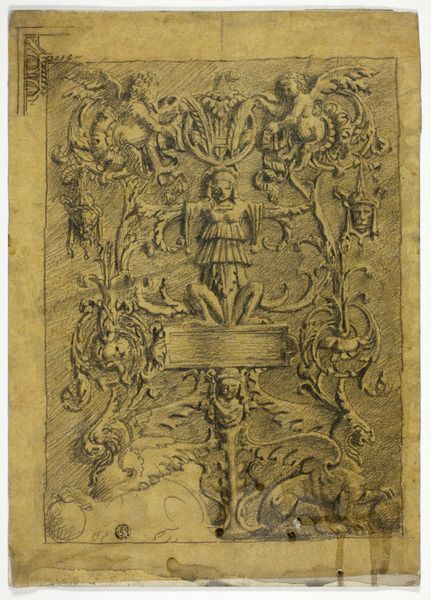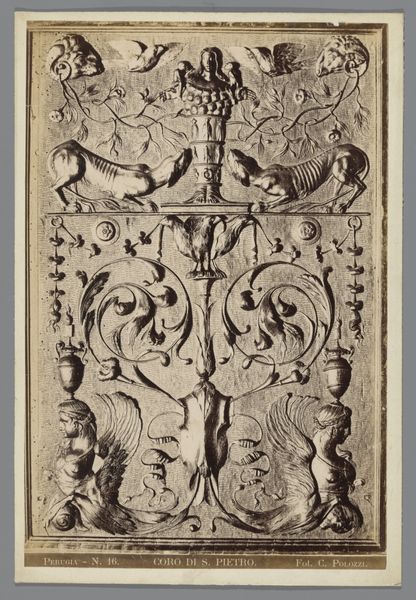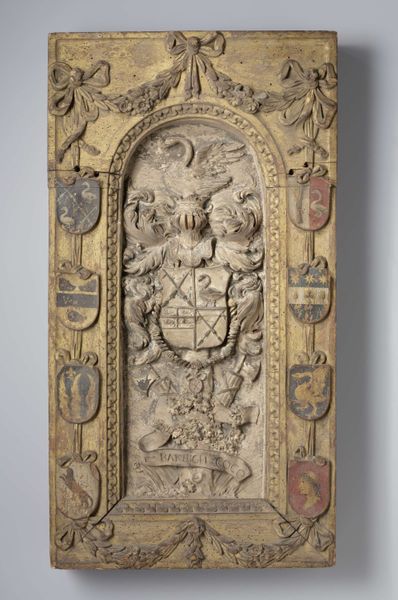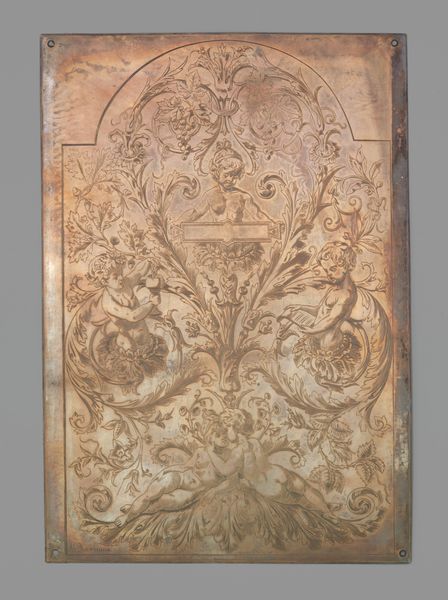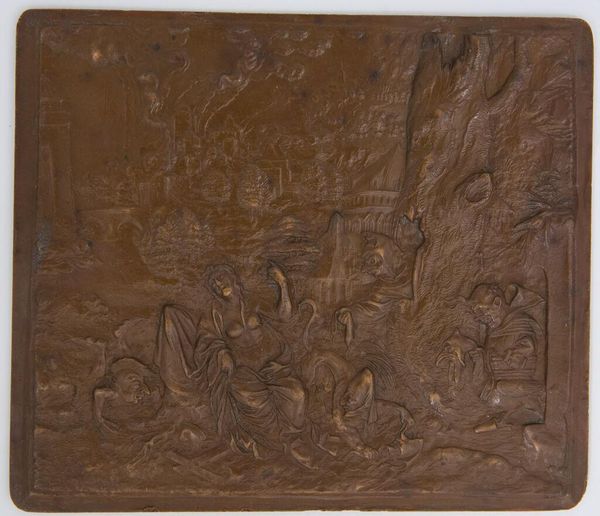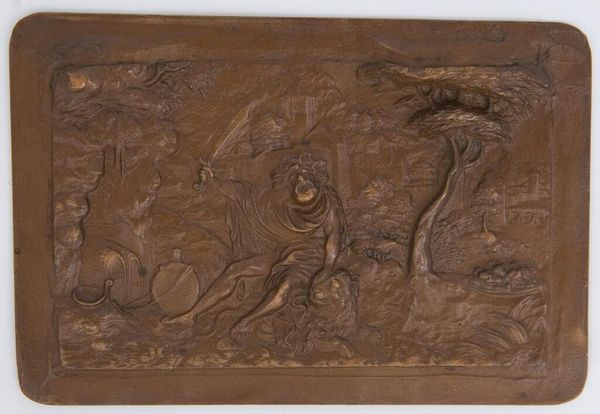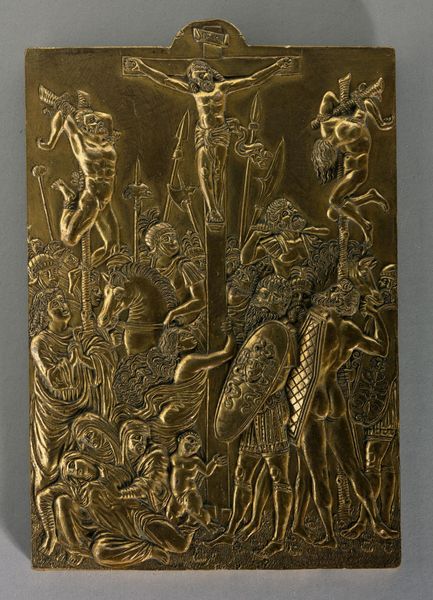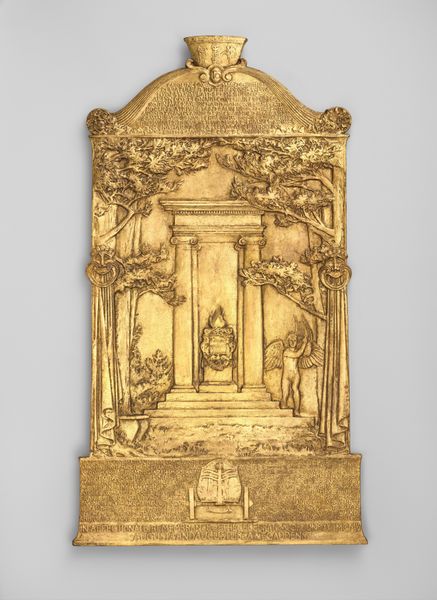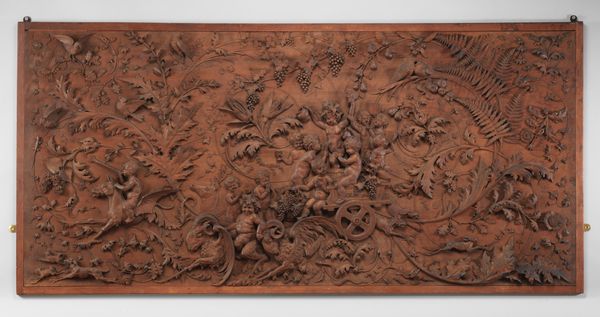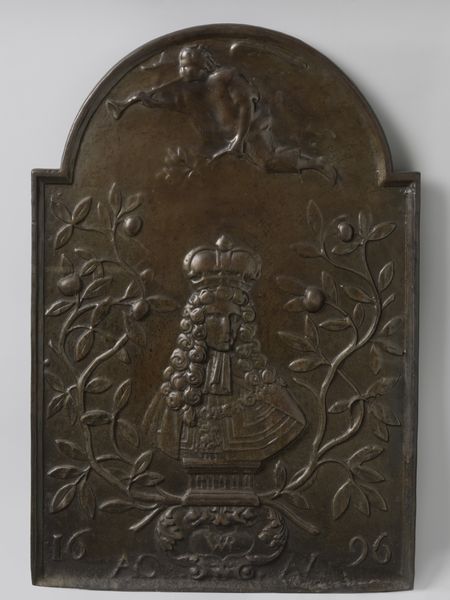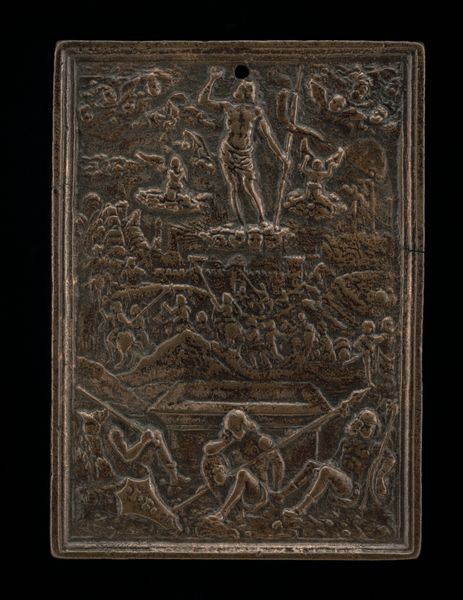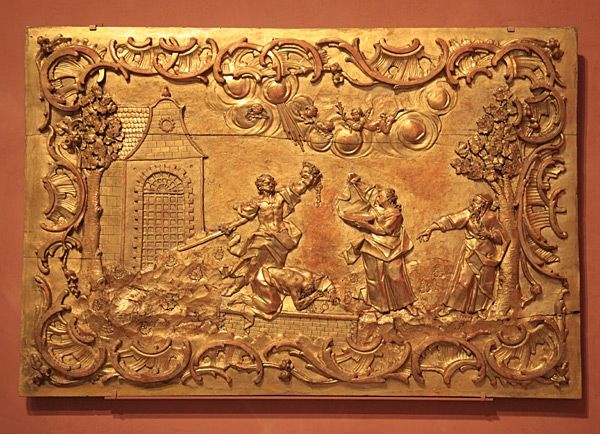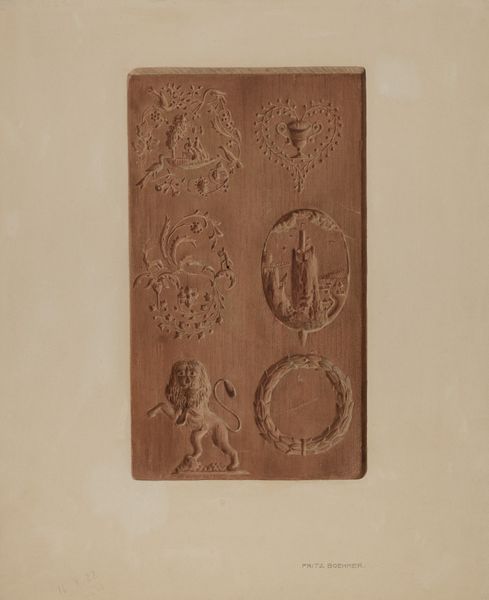
Dimensions: Panel: 27 3/4 x 20 5/8 in. (70.5 x 52.4 cm); Frame: 37 1/2 x 30 1/2 x 3 in. (95.3 x 77.5 x 7.6 cm)
Copyright: Public Domain
Editor: Here we have Aubert Henri Joseph Parent's "Floral Still-Life Relief," dating back to 1784. The carving is incredibly detailed; the birds and fruit practically jump off the wood. What historical perspective can you offer on such a piece? Curator: Well, the Baroque style in decorative arts often served as a demonstration of wealth and status. Think about where something like this would have been displayed in 1784. Who would have been its intended audience? Editor: I imagine it adorned the walls of a wealthy household, maybe above a fireplace or in a grand hall? A way to signal good taste and prosperity? Curator: Precisely. And the natural elements – the flowers, fruits, and even the birds – they weren’t just aesthetic choices. They reflected the prevailing fascination with the natural world during the Enlightenment. But consider how nature is presented here - controlled, ordered, and abundant. Does that give you any ideas about the cultural context? Editor: So, it is nature, but idealized and signifying control and abundance... perhaps the patrons saw themselves as masters of their environment, reflecting the colonial mindset of the era? Curator: Exactly! This idealized view of nature often served to legitimize control over resources and even people. These luxurious displays often obscured the realities of where such wealth came from. Is there any visible evidence of religious values mixed with the nature-inspired work? Editor: Looking closer, I see what seems to be Jesus with his disciples in what appears to be another relief within this overall piece. Was this something standard with artwork of this time, combining wealth and faith? Curator: Interesting that you spotted that so quickly! Yes, aligning material success with divine favor was a common theme. The art essentially performs a social function, reinforcing power structures and beliefs. Editor: I never considered the relief could tell a story about the socio-political context like that! Thanks for clarifying what I missed. Curator: And thank you for seeing the piece in a way that prompted those ideas! It’s this combination of artistic creation and societal expectation that makes art such an enduring focus.
Comments
No comments
Be the first to comment and join the conversation on the ultimate creative platform.
